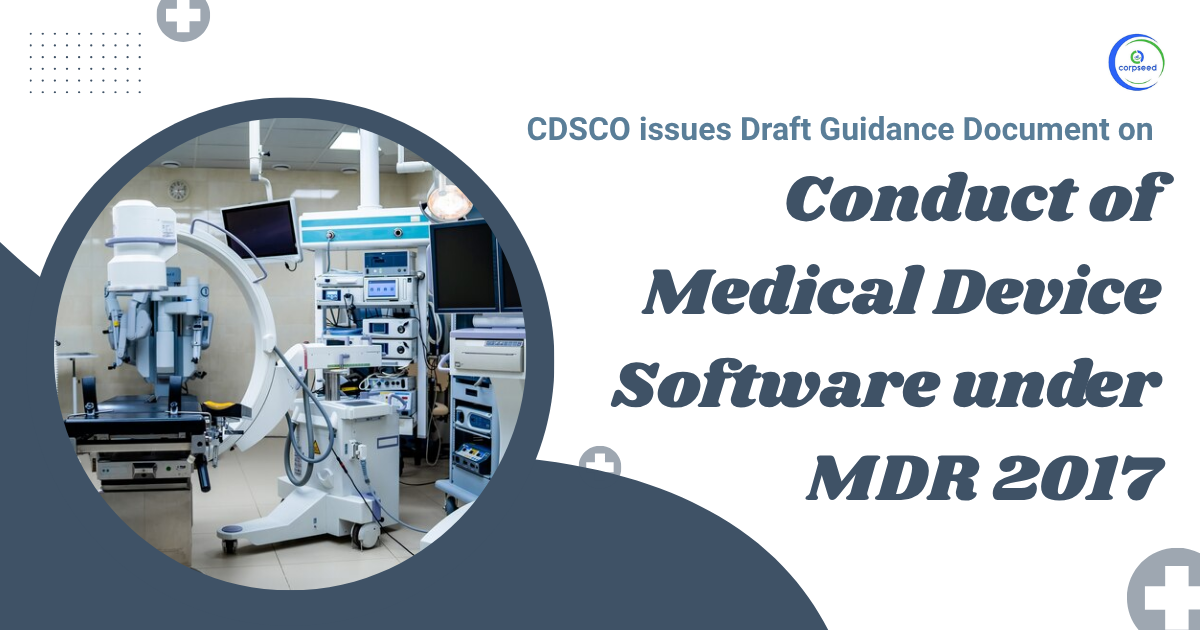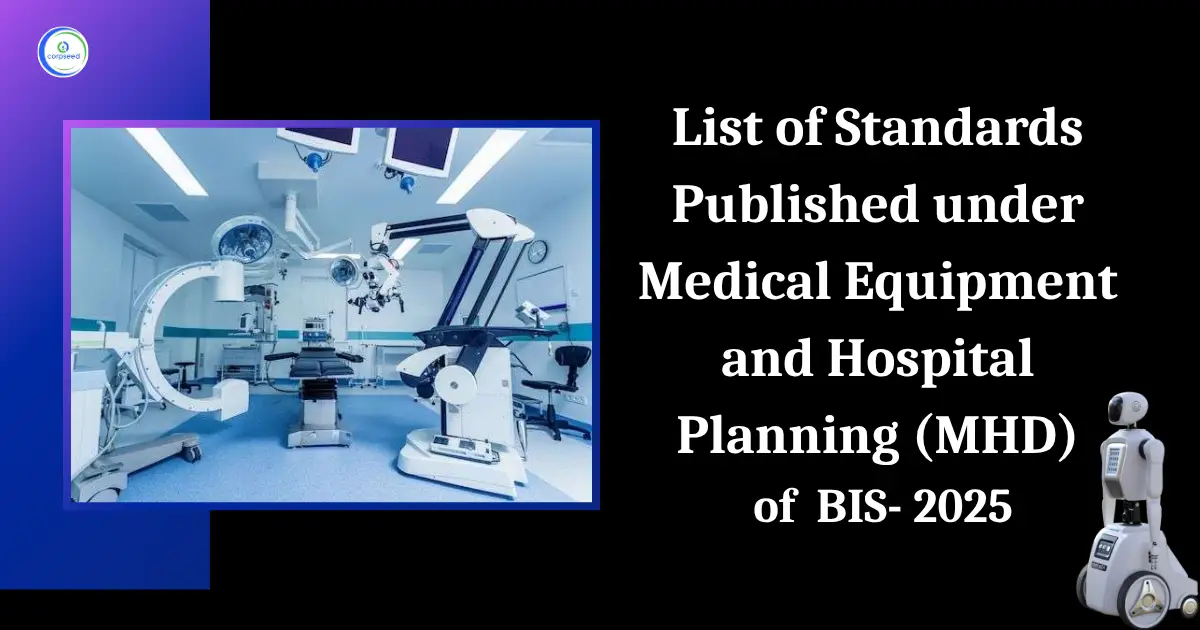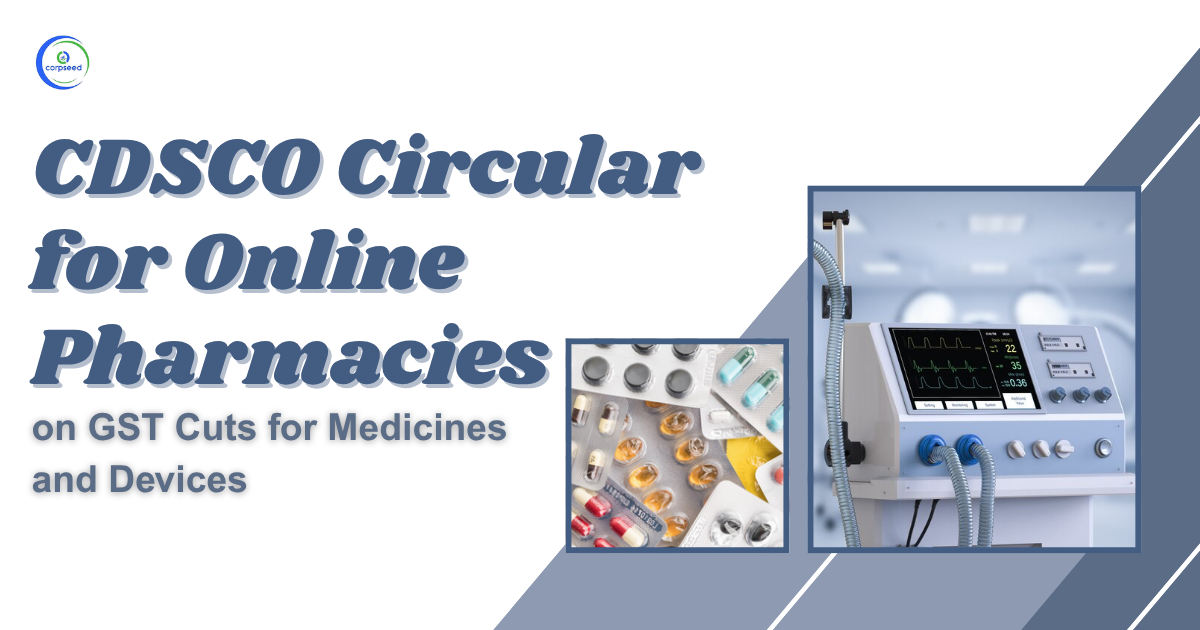A Brief Introduction of Oncology:
The branch of medicine which diagnose and treats the disease of cancer is known as Oncology. Medical professionals who works in Oncology department are known as Oncologist. Primarily, Oncologist have to diagnose the disease of cancer in the patient. There are several ways to diagnose the disease of cancer like via biopsy, endoscopy, X-ray, CT scanning, MRI, PET scanning, ultrasound or other radiological diagnosing processes. Oncologists also use nuclear medicine to diagnose the cancer disease.
Table of Contents
- A Brief Introduction of Oncology:
- What is a Medical Device?
- Types of Medical Devices in India
- Eligibility Criteria for Medical Devices Registration/Import
- Process & Fee for Medical Devices Registration
- Documents required to be attached
- Time Involved &Validity for Registration
- Post-Compliances after Receiving Registration
- How To Register Any New/Additional Medical Device If Medical Device Registration Obtained Already?
--------------Blog Contact Form-------------
From 1st of October 2022, the said medical devices having risk class A and B will be covered under the licensing regime of CDSCO. Once the devices are under the scope of licensing regime of CDSCO, all the importers and manufacturers of the said devices will have to apply for the license in order to sell their products in Indian Market.
The Oncology category consist of total 31 medical devices which are classified on the basis of their risk class and intended use. Out of which only class A and class B medical devices will fall under the licensing regime from 1 October 2022. The CDSCO listed medical devices are as below mentioned
| ONCOLOGY MEDICAL DEVICES | |||
| S. No. | Device Name | Intended Use | Classification India as per first schedule part 1 MDR 2017 |
| 1 | Bladder instillation buffer solution | A sterile buffer solution intended to be used exclusively for bladder instillation to help create an optimal environment necessary for the effective treatment of superficial bladder cancer with a chemotherapy agent. | B |
| 2 | Colonic cytology sampling set | A collection of non-sterile devices intended to collect exfoliated colonic cells (colonocytes) from the surface of human rectal mucosa for colorectal cancer investigation and/or patient screening. | B |
| 3 | Colposcope | An electrically-powered instrument intended to be used for the visual examination and treatment of the female genitalia. | B |
| 4 | Blepharoplasty scissors | A hand-held, manual, ophthalmic surgical instrument intended to be used to cut eyelid tissue during plastic surgery of the eyelids (blepharoplasty). It is not intended for intraocular surgery. | A |
| 5 | Capsular tension ring | A circular band intended to be used to enhance the mechanical stability of a subluxated crystalline lens capsule in the presence of weak or absent supporting zonules. | A |
| 6 | Brachytherapy radionuclide phantom, anthropomorphic | A device that consists of preserved human or animal tissue, or a two or three- dimensional (3-D) tissue-equivalent model designed to simulate the functional, physical, or a combination of these characteristics of normal or diseased human organs. | A |
| 7 | Acupressure wristband | A device designed to be worn on the wrist(s) for the application of pressure to the Nei-kuan (P6) acupressure point, the area identified to help relieve the sensation of nausea. | B |
| 8 | Antimicrobial postsurgical brassiere | A woman's undergarment which includes antimicrobial properties designed to: 1) support and/or contour the breast(s) or hold a dressing in place after surgical intervention (e.g., thoracic surgery, mastectomy, lumpectomy); intended for use during medical treatment (e.g., chemotherapy) or be used to protect the skin following treatment with a medication (e.g., ointment, cream). It is specifically designed for patient support/comfort in the home or healthcare facility. This is a reusable device. | A |
| 9 | Antimicrobial postsurgical female underpants | A manual brachytherapy applicator specifically designed to be used in radiation therapy treatments of the bladder. | A |
| 10 | Bladder brachytherapy system applicator, manual | A non-tissue configured model designed to mimic the functional/physical characteristics of normal or diseased human organs during performance evaluations of brachytherapy system components or radiation therapy treatment planning devices. | B |
| 11 | Brachytherapy radionuclide phantom, test object | A mains electricity (AC-powered) device (a chair or stool) that is a component of a brachytherapy system and which is specifically designed to support and position a patient during brachytherapy radiation treatments given by either a manual applicator or a remote afterloading brachytherapy system applicator. It will typically be height-adjustable and may have a reclining back. | A |
| 12 | Brachytherapy system chair | A tube or hose-like catheter with connectors at both ends used to interface the brachytherapy applicator to the remote afterloading system. | B |
| 13 | Brachytherapy system remote afterloading source transfer tube | A strip or roll of fabric or plastic material applied to the breast or breasts for soft tissue support. This is a single-use device. blunt surgical instrument used to scrape and retrieve cytological material from the surface of the cervix (neck of the uterus) or vaginal area for pathological examination and diagnosis, often for the detection of cervical cancer. This is a reusable device. | B |
| 14 | Breast binder | A hand-held, manual, blunt surgical instrument designed to scrape and retrieve cytological material from the surface of the cervix (neck of the uterus) or vaginal area for pathological examination and diagnosis, often for the detection of cervical cancer. This is a single-use device. | A |
| 15 | Cervical cytology scraper, reusable | A manual brachytherapy applicator specifically designed to be used in cervical and/or intrauterine radiation therapy treatments. It is an individual or modular device designed to facilitate manual placement, e.g., puncture, endoscopically guided placement or diagnostic imaging system guided placement, of single or multiple radioactive sources at a treatment site. | A |
| 16 | Cervical cytology scraper, single-use | A furniture-like device designed as a partial or total enclosure to provide a class I biosafety level (BSL) to the operator and the environment during the manipulation of microorganisms and other biological hazardous materials. | B |
| 17 | Cervical/intrauterine brachytherapy system applicator, manual | A device designed as a container to allow the safe deposit, collection and storage of cytotoxic materials (e.g., chemotherapy/antineoplastic drugs). | B |
| 18 | Class-I biological safety cabinet | It may be used for general infusion, antibiotic delivery, chemotherapy, or pain management in either a healthcare facility or in the home. This is a single-use device. | B |
| 19 | Cytotoxic waste receptacle | A non-sterile endoscope with a highly flexible sleeve and distal tip intended for the visual examination of the entire adult colon [lower gastrointestinal (GI) tract].It is used for the screening of colorectal cancer and the detection of other diseases of the lower GI tract. This is a single-use device. | A |
| 20 | Elastomeric infusion pump system | A vessel applied to the outside of the body (e.g., in the form of a jacket, vest, body wrap, cushion, blanket, or mattress) that incorporates tubing through which heated fluids are circulated for systemic or localized heating to treat malignant tumours, benign growths, or other disease-related conditions. he applicator typically includes a thermometry component that monitors the temperature of the applicator during operation. The applicator includes tubing, cables, and connectors that interface with the hyperthermia system's control unit during treatments. It is typically used in an oncology department. This is a reusable device. | B |
| 21 | Externally-propelled flexible video colonoscope | A device in the form of a template that is shielded on one side and containing grooved positions for manual brachytherapy sources on the other used for the temporary topical application of brachytherapy sources to the surface of the eye. | B |
| 22 | Extravascular-circulation hyperthermia system applicator, extracorporeal | An externally-applied device intended to be used as an artificial substitute for parts or sections of the face [e.g., nose, eye(s), eye brows, upper lip] to help restore facial appearance. | A |
| 23 | Eye brachytherapy system applicator, manual | An endoscope with a flexible inserted portion intended for the visual examination and treatment of the trachea, bronchi, and lungs. It is inserted through the mouth or nose during bronchoscopy. Anatomical images are transmitted to the user by the device through a fibreoptic bundle. This device is commonly used to diagnose lung infections, pneumonia, or lung cancer, and allows physicians to view the insides of the lungs and take biopsies and samples of secretions. This is a reusable device. | A |
| 24 | Facial prosthesis | An endoscope with a flexible inserted portion intended for the visual examination and treatment of the entire colon [lower gastrointestinal (GI) tract]. | B |
| 25 | Flexible fibreoptic bronchoscope | It is inserted through the anus during colonoscopy. Anatomical images are transmitted to the user by the device through a fibreoptic bundle. This device is commonly used to examine the lining of the colon or to evaluate altered bowel habits, colonic cancer, polyps, diverticular disease, occult or frank blood in stools, or unexplained anaemia. This is a reusable device. | B |
| 26 | Flexible fibreoptic colonoscope | An endoscope with a flexible inserted portion intended for the visual examination and treatment of the duodenum (the first part of the small intestine). It is inserted into the body through the mouth during duodenoscopy. | B |
| 27 | Flexible fibreoptic duodenoscope | Anatomical images are transmitted to the user by the device through a fibreoptic bundle. This device is commonly used to examine structures and mucous membranes of the duodenum, for conditions like ulcers, polyps and cancers. This is a reusable device. | B |
| 28 | Flexible fibreoptic gastroscope | An endoscope with a flexible inserted portion intended for the visual examination and treatment of the oesophagus and the stomach. It is inserted into the body through the mouth during gastroscopy. Anatomical images are transmitted to the user by the device through a fibreoptic bundle. This device is commonly used in the evaluation or treatment of unusual abdominal pain, bleeding, cancer, chronic heartburn, polyps, gastritis, ulcers, or hiatal hernia. Physicians may also use the device to obtain biopsies or perform other procedures. This is a reusable device. | B |
| 29 | Flexible fibreoptic sigmoidoscope | An endoscope with a flexible inserted portion intended for the visual examination and treatment of the sigmoid colon (the distal S-shaped part of the large intestine leading to the rectum). It is inserted through the anus during the procedure called a sigmoidoscopy or a proctosigmoidoscopy. Anatomical images are transmitted to the user by the device through a fibreoptic bundle. This device is commonly used to examine the structures and lining of the sigmoid colon and for indications of altered bowel habit, colonic cancer, polyps. This is a reusable device. | B |
| 30 | Flexible video bronchoscope, reusable | An endoscope with a flexible inserted portion for endoscopic procedures of the airways and tracheobronchial tree (i.e., bronchoscopy). It is inserted through the mouth or nose during bronchoscopy. Anatomical images are transmitted to the user by a video system with a charge-coupled device (CCD) chip at the distal end and the images showing on a monitor. It is commonly used to diagnose lung infections, pneumonia, or lung cancer, and allows physicians to view the insides of the lungs and take biopsies and samples of secretions. This is a reusable device. | B |
| 31 | Flexible video colonoscope, reusable | An endoscope with a flexible inserted portion intended for the visual examination and treatment of the entire colon [lower gastrointestinal (GI) tract]. It is inserted through the anus during colonoscopy. Anatomical images are transmitted to a monitor for viewing by a video system with a charge-coupled device (CCD) chip at the distal end of the endoscope. This device is commonly used to examine the lining of the colon or to evaluate altered bowel habits, colonic cancer, polyps, diverticular disease, occult or frank blood in stools, or unexplained anaemia. This is a reusable device. | B |
Central Drugs Standard Control Organisation:
India is growing as one of the nation's leading in pharmaceutical business and is among the top ten nations in terms of the pharmaceutical industry. Several factors such as large population, growing health awareness, affordable medical facilities, and better research facilities have given rise to the manufacturing and development of pharma business in India. However, with the increasing scope for the growth of the pharma industry in India, there are possibilities for the sale/purchase of medical equipment & device illegally or without jurisdiction. Therefore, the Government of India has established the Central Drug Standards Control Organization (CDSCO), which is the primary legislative body and has been responsible for the regulation, control, and management of pharmaceuticals and medical devices in India apart from the appointment of the Drug Controller General of India (DCGI), and has conferred the responsibility of undertaking assessment, approval and regulation of further compliances(import, export, sale, distribution) in the matters of medicinal drugs and medical devices(including any existing or any new) drugs/devices in accordance with the provisions of the Drugs and Cosmetics Act 1940.
C
What is a Medical Device?
According to the latest definition as provided under the Medical Devices Amendment rules 2020, as notified on 11.02.2020. However, taking care of circumstances the government has exercised its powers to include more categories by widening the scope of the definition of “Medical Device” under the Act. It states-
"Devices used in general medical practice such as medical apparatus, instruments, implants appliance, etc., which are either used individually or in combination, and are intended to be specifically applied for human beings or animals and are further intended to obtain the desired function by such means and for such purposes as provided below, but is not intended to meet the primary intended action on human body or animals by any pharmacological or immunological or metabolic means-
- Analysis, prevention, observing, treatment, or mitigation of any disease or disorder;
- Analysis, observing, treatment, mitigation, or support for any injury or disability;
- Examination, replacement or alteration or support in findings of the anatomy or a physiological process;
- For supporting or sustaining life;
- Decontamination of medical devices; and
- Conception related equipment’s & devices.
Therefore, every manufacturer or importer or both of any medical devices in India shall be required to obtain registration as per the provisions of the Drugs and Cosmetics Act 1940. Any failure to comply with the same may invite legal action including penalty & prosecution under the Act.
Types of Medical Devices in India
Provisions related to the import, manufacture, sale & distribution of medical devices are regulated under the provisions of the drug and cosmetics Act 1945. Under the New Medical Rules 2017, all medical devices have been classified into four different categories depending on their usability & risk involved as provided below.
- Class A:- Low-risk devices like a thermometer, tongue depressors, etc.
- Class B:- Low moderate risk like Hypodermic Needles, suction equipment, etc.
- Class C:- Moderate high-risk devices like Lung ventilator, etc.
- Class D:- High-risk devices like Heart valves, implantable devices, etc.
Where Class A & B devices are considered to be less risky and moderate devices, for which the application to manufacture has to be filed to the State Licensing Authority. Whereas Class C &D are considered to be high and very High-risk devices and the application for these has to be filed to the Central Licensing Authority of India.
Eligibility Criteria for Medical Devices Registration/Import
The provisions related to activities such as Import, manufacture, sale, and distribution of medical devices have been regulated under the provisions of the Drugs & Cosmetic Act 1940 & Rules 1945. Therefore, any person/firm/enterprise, etc. holding a wholesale drug license and/or manufacturing license issued under the Drugs and Cosmetics Act, 1940 and Rules 1945 could make an application for Registration and import of medical devices into India.
Process & Fee for Medical Devices Registration
Types of Medical Devices Registration
- Registration/Import of any existing medical device;
- Registration /import of any new medical device
Step 1: Determine whether your medical device is under notified list or not
The CDSCO authority has provided a list of notified medical devices that need to compulsorily obtain registration under the Drugs and Cosmetics Act 1940 and in accordance with Medical devices rules 2017. However, there may be any medical devices that have not been expressly notified by the CDSCO authority, or in case of new medical equipment, the manufacturer/importer shall be required to obtain a NOC in such cases. For instance, Blood Grouping Sera Ligatures, Sutures, Staples Intra-Uterine Devices (Cu-T), Condoms, Tubal Rings, Surgical Dressing, Umbilical Tapes, Blood / Blood Component Bags do not need registration, whereas devices such as spinal needles, cochlear implants, syringes, and needles, heart valves, endotracheal tubes and catheters among others should undergo registration provides with the CDSCO.
Step 2: Appoint an Authorized representative (in case of Foreign Entity)
For a foreign business manufacturer entity, it shall be necessary to appoint an authorized business entity in India, who shall be the contact person for the inspection authorities during the process, assist in device approvals, and registrations process, and vigilance adverse event reporting. The Indian Authorization should hold a wholesale drug license in forms 20B& 21B.
Step 3: Fill out the applicable form for Medical device Registration
In the next step, the manufacturer/importer for MD shall be required to submit the registration form of a regulatory dossier, along with all the prescribed documents along with the prescribed fee on the CDSCO portal to the DGCI (Drugs Controller General of India) by logging on to the online CDSCO portal https://cdsco.gov.in/opencms/opencms/en/Home/ and signing into the portal.
Following forms along with applicable govt. fees have been provided below, which shall be required to be paid through payment challan-
| Applicant Type | Class of MD | Application Form | License Form |
| Importer | A,B,C,D | MD-14 | MD-15 |
| Manufacturer | A B | MD-3 | MD-5 |
| Manufacturer(Loan License) | A B | MD-4 | MD-6 |
| Manufacturer | C, D | MD-7 | MD-9 |
| Manufacturer(Loan License) | C, D | MD-8 | MD-10 |
However, in the case of new equipment or medical device-
| Application Type | Class of MD | Application Form | License Form |
| Importer Clinical Investigation | A,B,C,D | MD-22 | MD-23 |
| Import License | A,B,C,D | MD-26 | MD-27 |
| Test License(for importer) | A,B,C,D | MD-16 | MD-17 |
| Manufacturer (Clinical investigation) | A,B,C,D | MD-22 | MD-23 |
| Manufacturer License | A,B,C,D | MD-26 | MD-27 |
| Test License | A,B,C,D | MD-16 | MD-17 |
Further, each application shall be supported with the list of documents and the requisite fee as provided in the online portal of CDSCO-
| Type of License | Class of Device | Applicable Regulation | Govt. Fee |
For Manufacturing/Loan License
|
A or B; | 20(2) | Rs. 5000 Rs. 500 |
For Manufacturing/Loan License
|
C or D; | 21(2) | Rs. 50,000 Rs. 500 |
For Import License(other than IVD)
|
Class A | 34(2) | 1000 Dollar 50 Dollar |
Import License(other than IVD)
|
Class B | 34(2) | 2000 Dollar 1000 Dollar |
Import License (in IVD)
|
Class A or B | 34(2) | Rs. 1000 Rs. 10 |
Import License(other than IVD)
|
Class C or D | 34(2) | 3000 Dollar 1500 Dollar |
Import License(in IVD)
|
C or D | 34(2) | 3000 Dollar 500 Dollar |
Step 4:O btain Certificate of Registration in Prescribed form
Once the application is submitted on the CDSCO portal, the DGCI registration authority may send a query through an inquiry letter to the manufacturer or from the authorized representative of the importer, along with the timeline within which the query should be answered and sometimes, may also ask for a technical presentation On satisfaction the authority may issue a license in such form as provided in the above list. After obtaining registration, the manufacturer or his authorized representative may apply for an importer license.
Documents required to be attached
- Form 40
- ISO 13485 certificate
- Full Quality Assurance Certificate
- CE Design Certificate
- Undertaking that all information provided is authentic
- Either a Free Sale Certificate or Certificate from the Foreign Government
- Certificate of Marketability from GHTF (Australia, Canada, Japan, the European Union, and the United States);
- Plant Master Report
- Device Master File
Time Involved &Validity for Registration
If the DGCI doesn’t ask for a Technical Presentation or Subject Expert Committee (SEC) audit, it takes around 6-9 months to obtain a Medical Devices Registration. In cases where Technical Presentation or Subject Expert Committee (SEC) audit, is required, it may take additional 3-6 months.
Once obtained the Registration Certificate shall be valid for a total period of 3 years from the date of issue of registration unless suspended or cancelled by the DGCI authority for proper causes.
Re-registration or Renewal of the Registration Certificate
The application for renewal of the MD registration certificate shall be made at least nine months from the expiry of the registration certificate. Though there are no additional requirements for the renewal of registration, it shall be necessary for the certificate holder to provide a copy of the Plant Master File (PMF) and Device Master File (DMF), where there are no changes in the PMF and DMF,
Post-Compliances after Receiving Registration
Though there are not many compliances in place about the registration certificate, it shall be compulsory for the certificate holder to-
- In case of any change that has taken place about the constitution of the firm and/or address of the registered office/factory premises, the MD manufacturer/authorized representative of the importer to intimate the licensing authority regarding the same in writing;
- In case any such change has taken place, the existing registration certificate shall be valid for a maximum period of three months from the date on which the change has taken place, and during this time, the manufacturer/authorized representative shall be required to obtain a fresh Registration Certificate;
How To Register Any New/Additional Medical Device If Medical Device Registration Obtained Already?
In case an importer wants to obtain registration for manufacturing of any additional manufacturing device, then such person shall be required to obtain an endorsement to the existing Registration Certificate along with the prescribed documents holding that manufacturing of an additional device is being undertaken in the manufacturing site as provided in the registration certificate along with a fee of 1000 dollars fee for each additional device.
Drug License
A drug license is an official permission granted to individuals or companies that manufacture, distribute, and sell drugs in India. It ensures adherence to the safety and quality standards of the regulatory authorities that ensure public health.
Medical Devices Import/Manufacturing
CDSCO online registration is a process that ensures that all the drugs, medical devices, and cosmetics in the market are safe, reliable, and must have passed quality standards. Importers, manufacturers, and others must register under the CDSCO for a certificate if they are working in this field.
Medical Devices Import
The CDSCO is responsible for medical device registration in India. This registration guarantees that all devices are safe, of high quality, and comply with regulatory standards. This registration not only protects patients but also supports global trade.
This portion of the site is for informational purposes only. The content is not legal advice. The statements and opinions are the expression of author, not corpseed, and have not been evaluated by corpseed for accuracy, completeness, or changes in the law.
BOOK A FREE CONSULTATION
Get help from an experienced legal adviser. Schedule your consultation at a time that works for you and it's absolutely FREE.











